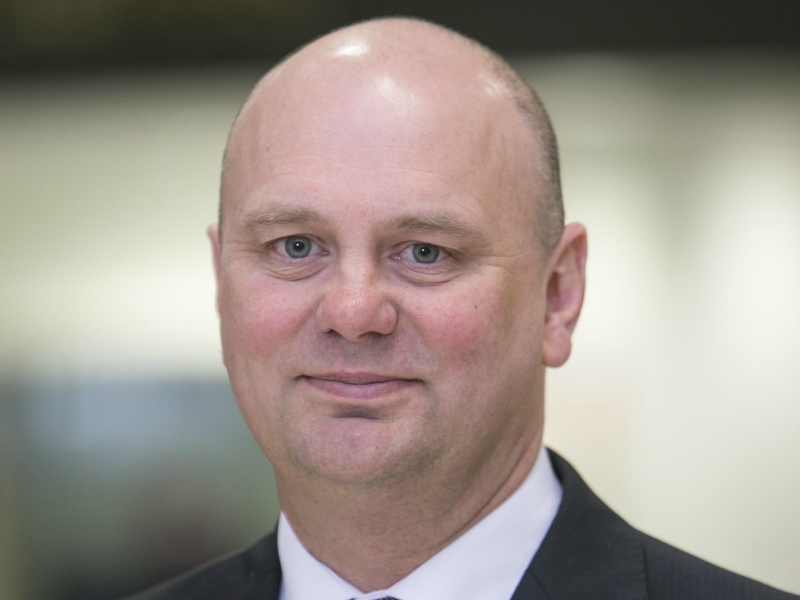Beginning his career as a firefighter at Edinburgh airport, Martin Stubbs then started work at Europe’s busiest heliport, where he now runs everything from air traffic control to compliance, fire and rescue
How did you get into the aviation industry?
I joined Edinburgh airport on the 28 December 1993 as a trainee firefighter, and started a fantastic career path. It sounds a bit of a cliche, but my dream job from a very young age was to be a firefighter.
How has your career progressed?
I spent nine years at Edinburgh as a firefighter and then moved north to Aberdeen to progress my career. In 2013 I was appointed head of the fire service, and in 2016 I was appointed head of aerodrome operations. This is my current role and has been a fantastic opportunity for me. I am fortunate enough to work with a great team who have an extremely high level of knowledge and professionalism.
What are the highlights of your career?
Before coming to the airports, I worked as a heavy goods vehicle mechanic. This experience proved invaluable, as I have always been involved in fire appliance design which is something I enjoy. Being given the opportunity to take on a key managerial role reporting directly to the managing director was a real highlight. My fire service career will also always be a time that I look back on with a great deal of fondness – after all, it was where it all began.

Aberdeen International airport
What does your job involve?
My role has a wide remit, as I have overall responsibility for airside operations, fire and rescue service, motor transport, and am also the appointed contract manager for our air traffic control provider. As accountable manager I am the point of contact for the UK Civil Aviation Authority, ensuring the highest levels of safety and compliance are maintained at all times. This is a very fast-paced industry and responding to the needs of our operators, whether it is within the rotary or fixed wing markets, is vitally important. A large part of my role is meeting with business partners to understand their needs, being responsive to change so they can respond to customer requirements.
What are the challenges?
The diversity of aircraft and operators can present us with real challenges. Sometimes we have to find unique ways of working, taking into account our infrastructure layout and operating consents. We have a complex and extensive infrastructure that needs continuous investment. Ensuring we keep everything moving to a tight schedule whilst carrying out construction works always presents difficulties.
Our winters up here in the northeast of Scotland can be particularly difficult, and the team are renowned within industry for their winter operations experience, which is second to none.
What do you enjoy most about your role?
Every day at the airport is different and can be very challenging – it’s this that I enjoy the most. You can have a whole day planned but an unexpected event can change everything, and you have to respond. The aircraft types and travellers using the airport is varied as we are Europe’s busiest heliport, servicing the offshore industry for many years, and have fixed-wing routes to 42 destinations within Europe. We currently operate one fixed-wing runway and three helicopter runways, and welcome 3.1 million passengers per year through our airport. It’s this diversity that makes the airport such an enjoyable and interesting place to work.
What plans do you have for the airport?
Last year we introduced new-generation security screening equipment, and this has transformed the passenger experience, as well as how our teams work. This year we will complete a three-year multi-million pound transformation of our terminal building, with new retail units, dining areas and lounges becoming fully available in autumn 2019.
We introduce High Reach Extending Turret Technology (HRET) later this year, which is a change to the way our firefighters operate. Our parent company, AGS Airports, wants to embrace technology and realise the benefits that it can give the business and the traveller. Over the next three years we will continue to invest in our airside infrastructure, ensuring safety is given the ultimate priority.
Regionally, the city of Aberdeen is undergoing some transformative large-scale infrastructure projects that will have a positive impact upon the airport. The city bypass has now opened, the harbour is being developed to accommodate cruise ships, and the new exhibition centre will open this year. These all present opportunities to grow as an airport and as a region, which really is an exciting prospect.
If you would like to feature in Working Week, or you know someone who does, email your pitch to kate.sarsfield@flightglobal.com
Source: Flight International


























